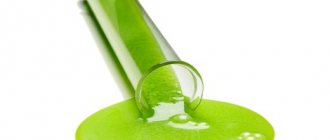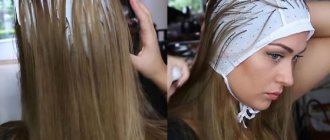Silicones can be found everywhere: in creams, serums, shampoos, hair styling products... They have become to the cosmetics industry what Lycra is to our tights! An irreplaceable thing, necessary, but why? What are the advantages of silicones in our cosmetics? What problems might they present? Let's figure it out.
SILICONES: WHAT ARE THEY?
Silicone is a synthetic and inorganic polymer obtained as a result of chemical transformations of quartz. If quartz is a natural raw material, then its final result is completely synthetic. This is a "plastic" component.
Depending on the nature of the organic group and the polymerization conditions, silicones can have different structures and textures, ranging from the most fluid (oil) to the hardest (wax, paste, etc.).
Thus, the term "silicone" does not refer to a specific ingredient, but rather to a large family of compounds with special properties that open up a wide range of applications. This is why you can find silicones in your shampoo, as well as in cake tins, all plumbing sealants, lubricants, adhesives, baby accessories, surgical prosthetics, implants, etc. Regardless of their purpose, they provide elasticity, flexibility and softness to the product.
WHY ARE SILICONES ADDED TO COSMETICS?
We all love having silky, shiny hair and makeup that lasts all day. The synthetic ingredient responsible for these results is usually silicone. They were first added to cosmetic products in the 1950s.
Silicones go by different names (this is one of the most famous) and are modified in many different formulas to perform a specific role: seal, retain moisture, adhere to color pigments, protect hair and make it soft and silky. In skin care, they help avoid the feeling of greasy or sticky upon application. They provide deodorants with the ability to dry quickly and sunscreens with water resistance.
Silicones come under a variety of names, most often ending in "xane", "ane", "thicone" or "thiconol" in the form of more or less volatile oils or waxes.
The silicones most commonly used in our creams or serums are dimethicone (high molecular weight waxes, protective coatings, fillers), cyclopentasiloxane and cyclomethicone (highly volatile, they provide a non-greasy and slippery feel).
Depending on their volatility, they lie in a more or less thick layer on the epidermis. The product glides onto the skin and leaves a feeling of incomparable softness. Miracle! The skin becomes silky and velvety in a matter of seconds. Yes, but it's not your skin that is smooth and soft, it's the silicones that cover it.
Epidermis in section
Epidermis in section, covered with silicones
The microrelief of the skin, its pores, imperfections, fine lines are partially filled with this layer of “plasticizer”, represented by a dark gray color on the 2nd section.
Dimethicone in cosmetics: harm or benefit
Dimethicone is used quite often in cosmetics. This substance is one of the varieties of liquid silicone. It is found in many skin creams, lipsticks, hair care products, etc.
Controversial issues
There is a lot of controversy about the usefulness of this ingredient. Many people know that dimethicone is used in cosmetics to improve the properties of a particular product. Few people are interested in what it is in the broad sense, which gives rise to certain rumors and legends.
It is officially considered to be neutral and not able to react with the skin. Dimethicone in cosmetics is relatively safe, except that it can cause an allergic reaction in some cases.
Properties
Dimethiconol is a very viscous substance. Most often it is used in conjunction with cyclomethicone.
Dimethicone in hair cosmetics has the peculiarity of being easily distributed over its entire length and not causing grease. Such products add shine and silkiness.
The structure of the substance is such that it has a softness and water-repellent effect. All this can create special protection on the skin and hair.
This barrier allows the skin to “breathe”. Dimethicone is often present in cosmetics in sunscreen series; in addition, it can temporarily hide wrinkles. It is often used to produce moisturizing creams and lotions, as well as a number of decorative products.
Features of the substance
Many buyers believe that dimethicone in cosmetics is harmful, but it is officially believed that it has large molecules that practically do not penetrate the skin. Therefore, the product can be successfully taken for personal hygiene.
Most often it is used in the form of an emulsion. Dimethicone in cosmetics is used as an antifoaming agent and reduces excessive foaming of the product.
It also does not dissolve in water, which on the one hand makes it easier to care for hair and skin. But on the other hand, the ingredient must be effectively removed after use, so you need to use products that contain lauryl, laureth sulfate or lotions with a high fat content.
Reviews
The scope of use of this ingredient is very wide. But what is dimethicone in cosmetics - harm or benefit? There is no definite answer here, since reviews of the application are different, and so are the opinions of experts.
For example, there is a review about the regular use of a silicone-based mask. As a result, one day the stylist noticed a noticeable stretching of the hair.
He said that this is due to a violation of their structure. Among the reasons that caused this is the use of silicones. In this case, it turned out that dimethicone in cosmetics is harmful.
At the same time, there was no other objective reason for hair damage.
As it turned out, the film formed by dimethicone on the hair, which was constantly there, prevented the flow of moisture. We can conclude that it is possible to use such funds, but not on an ongoing basis. For example, before an important event you can treat yourself to a glow on your skin, but for every day it is better to use more natural products.
And what exactly dimethicone in hair cosmetics is - harm or benefit - is up to you to decide individually.
Where are silicones used?
Dimethicone in cosmetics is a common phenomenon. There are other silicones that are used in a similar way, but this type is the most popular in this case.
Dimethicone is also used in medicine. Thus, it is the basis for the production of carminatives, drugs against flatulence and colic in babies.
In cosmetics
Dimethicone allows you to make the structure of decorative cosmetics smoother. This allows you to apply lipstick or eye shadow to your face more easily.
In creams, it is able to create a waterproof protection that keeps the skin from losing fluid. Dimethicone also improves their consistency. The cream is able to spread better over the face and is not sticky.
However, silicone can clog the pores on the face and aggravate allergies.
As for hair products, it has already been mentioned that it gives shine and a healthy look, and also reduces static. But on the other hand, dimethicone can build up and cause dryness and brittleness. Periodically you need to use shampoo for deep cleaning.
Flaws
It has already been said that dimethicone in cosmetics, in hair products in particular, can be harmful to them, worsening their structure. But this is not the only drawback of this ingredient. Thus, according to some studies, silicones are toxic, can cause allergies and have a negative effect on our body as a whole. For example, it can negatively affect the functioning of the immune system.
One of the most common problems associated with the presence of silicones in hair cosmetics is the issue of their accumulation on the scalp.
When the product is applied and there is no subsequent cleansing, dimethicone may fall off the cells. Along with itself, it captures hair particles, which subsequently provokes their fragility and loss of volume.
If silicones are washed well and on time, they will not pose a danger.
Contraindications
In some cases, the substance does not have time to fall off and begins to accumulate. All this leads to heavier hair and stress, which then provokes hair loss.
If your skin itself is thin, it is better not to use products with dimethicone at all. Because the hair may not withstand such a load. It is not recommended to use them if your curls are finely wavy.
To check your hair volume, pull it into a ponytail and measure its circumference. If it is more than 5 cm, then silicone-based products will not be scary for you.
What should you do to avoid causing harm?
Dimethicone in cosmetics intended for the head creates a special film that prevents liquid from coming out. It can also form not only on the hair, but also on the skin underneath it. To prevent this from happening, avoid using conditioners and root oils.
Many silicone-based products require that one or another detergent be used with them. This is not very good if you have long hair, because only the roots are washed. But after using silicones, you should wash your hair entirely so as not to dry out the ends with harsh products. This is worth paying attention to if you are worried about the problem with their loss.
Source: https://autogear.ru/article/247/356/dimetikon-v-kosmetike-vred-ili-polza/
ARE SILICONES TOXIC?
Most silicones used in cosmetics, including the essential dimethicone, are inert and not toxic to skin or hair. But if we are talking about “cyclo...”, in particular cyclotetrasiloxane, cyclohexasiloxane and cyclopentasiloxane, these are very volatile silicones, they are potentially carcinogenic and can cause hormonal, reproductive, and endocrine disorders.
If their toxicity varies from one form to another, then ALL silicones are a source of environmental pollution! Being chemically inert, they are especially stable, their biodegradability reaches 500 years. The production and use of silicones on a very large scale and their accumulation pose a real threat to our environment.
| The January 2020 European Directive prohibits the use of cyclotetrasiloxane and cyclopentasiloxane in wash-off cosmetic products at a dose >0.1% of the product. This applies to all products such as shampoo, conditioner, conditioner, as silicones end up in wastewater. This ban, passed in January 2020, will come into force in 2020. |
This is why it is very important to learn how to decipher the ingredients of cosmetic products on the label or use organic cosmetics.
Dimethicone
Dimethicone, also called Polydimethylsiloxane, is a silicone polymer widely used in cosmetics. It is optically transparent and is considered inert, non-toxic and non-flammable. This property finds its application from contact lenses to medical installations. In addition, it is used in food production, lubricants and many other products.
In the food industry it is found as a food additive E900 - a defoamer and anti-caking agent.
Main properties and functions of dimethicone in hair cosmetics
In hair cosmetics, dimethicone provides skin protection, suppresses foam, has a conditioning effect on the hair, and adds shine and silkiness to the hair.
It has a soothing effect on the skin and can protect it from irritation caused by aggressive detergent ingredients (for example, Sodium Lauryl Sulfate).
Therefore, it is often added to cosmetic formulations with irritating ingredients.
Dimethicone softens skin and hair well, regardless of weather conditions. And it doesn't weigh them down. Equally suitable for both dry and oily skin. Like Amodimethicone, it is widely used in the production of 2-in-1 shampoos and waterproof cosmetics (as a film-forming water-repellent component).
Now it is one of the most common additives in hair cosmetics of different price categories.
Moreover, it can be one of those components that can be effective both in paints and oxidizers, and in shampoos, conditioners, thermal protection and styling products.
Dimethicone is poorly soluble in water, so fat-containing lotions are used to remove it from the surface of the skin. And to remove it from the hair, it is necessary to use shampoos with Cocamidopropil Betaine or Lauryl Sulfate or Laureth Sulfate.
A few words about the dangers of dimethicone
Like many other silicones, dimethicone has many negative rumors about its harmful effects on the skin and hair, as well as its dangers.
However, in fact, back in 2003, the Cosmetic Ingredients Safety Commission (CIR) took a comprehensive look at a whole group of silicones, which included dimethicone, and determined them to be safe ingredients for use in personal care and cosmetic products.
According to the findings of this commission, this component is unlikely to be absorbed by the skin, since it has a large molecule size. Additional clinical trials subsequently confirmed this finding.
During laboratory experiments, it was found that it does not irritate the skin and does not cause allergic reactions, is safe even when taken with food and inhaled, practically does not irritate the eyes and does not affect pregnancy and the fetus if used as part of a cosmetic product.
Hairdressers call one of the common disadvantages of dimethicone the accumulative effect. Let's find out if this is true? Indeed, dimethicone is insoluble in water and can stay on the hair for up to 3-4 washes after application.
However, as mentioned earlier, to wash it off your hair, it is enough to have a so-called “sulfate” shampoo with cocamidopropyl betaine. Most shampoos from the professional market and the market from ordinary stores fall into this category of shampoos.
Therefore, if the shampoo you purchased does not wash away the silicone film from your hair and your hair seems greasy (which is usually observed if sulfate-free shampoo is purchased with conventional conditioners), then most likely your care was chosen incorrectly. And you should change either your shampoo or conditioner.
When changing shampoo, 1-2 hair washing procedures will be enough to remove all accumulations - there will be no side effects on the hair.
Dimethicone in the fight against lice
Not so long ago, safe pharmaceutical preparations that do not contain insecticides against lice appeared. The main active substance in them is dimethicone. An example of such a drug is Hedrin, although there are other products with similar effects.
Since such preparations do not contain insecticides, they are safe for children over 6 years of age.
And besides, dimethicone itself is hypoallergenic, which makes it even more attractive as a healing component in formulations for children and sensitive scalps.
The mechanism of operation of the drug is simple and is based on the main ability of silicone - to create a moisture-proof film on the surface being treated. The composition is applied to the hair by spraying, like a caring spray. For uniform distribution over the surface, comb the hair.
So, dimethicone and the waxy substances that help it are distributed in a thin film over all the hair, as well as the lice and nits attached to it. Such a film does not allow moisture to pass through either from the outside or from the inside. In addition, the drug removes the waxy protective film from parasites.
Being under a film of silicone, lice and nits cannot absorb water (they become dehydrated), and the composition of the drug easily penetrates into their breathing tubes and clogs them. The parasites' ability to control moisture is blocked and they die.
Moreover, not only lice die, but also some nits, without ever reaching the hatching phase.
DO SILICONES HAVE A BENEFICIAL EFFECT ON THE SKIN?
No! Silicones are inert compounds that the skin does not recognize. Their chemical structure does not allow (or allows little) them to penetrate the epidermis. Depending on their shape and viscosity, silicones can form a more or less covering layer on the skin, partially impede breathing and clog pores, which can ultimately lead to acne. Moreover, even if they can to some extent help protect the skin from external influences, they do not participate in its normalization and nutrition. As with mineral oils, the skin becomes dependent on this type of product, lazy and vulnerable.
IS IT POSSIBLE TO REPLACE SILICONES?
You can often hear that their use is inevitable, in particular due to the lack of alternative ingredients of natural origin that are as effective. This issue is a real headache for organic cosmetics, which prohibit the use of silicones and which, as we know, are often ineffective when it comes to hair products.
However, in organic cosmetics, silicones are replaced with vegetable oils (jojoba, argan, apricot kernels), which also create a feeling of softness and elasticity.
Recently, “vegetable silicone”, obtained from algae using biotechnology, has appeared on the cosmetic ingredient market. It represents an interesting alternative, but so far it has been used very little in cosmetics.
Phenylmethicone
Phenylmethicone - used in hair care products to give it a well-groomed, beautiful appearance, additional shine, smoothness and silkiness. This is also an illusion and it is also short-lived - after washing off the silicone from the hair, everything will return to normal, its condition will again become normal. The effect of healthy hair is only visual; in fact, no hair care takes place. In cosmetics, phenylmethicone is designated as Phenyl Trimethicone.
This is not a complete list of types of silicones in cosmetics, but only the main ones. There are a great many different variations. Cosmetics manufacturers do not stand still and are constantly experimenting with silicone compositions, trying to extract maximum benefits from them.










